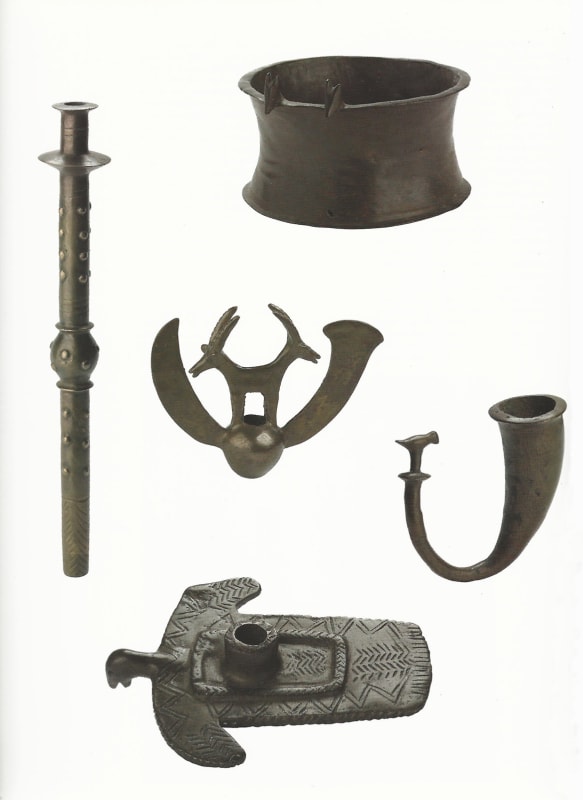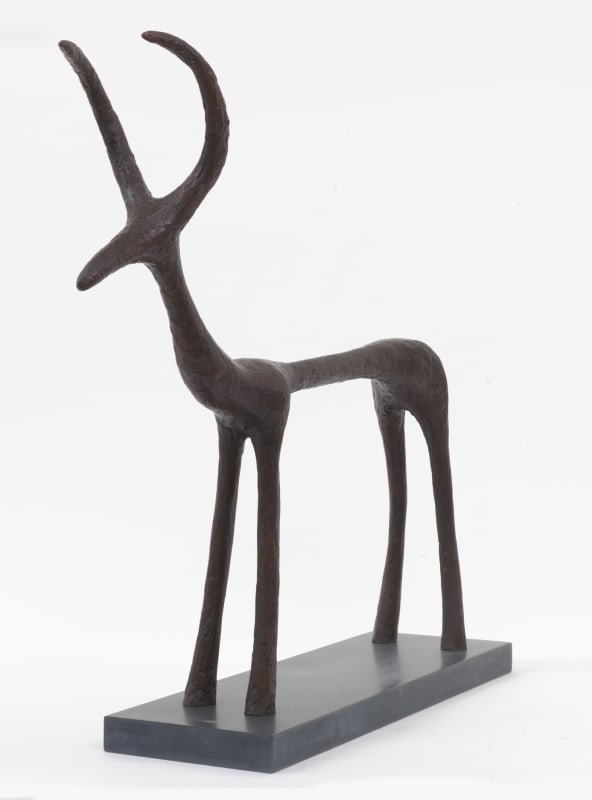The gallery doors may have closed again but we are still very much open online and are delighted to welcome you to the first entry of our new series of Sculptors' Materials.
Every Thursday for the next 12 weeks we will be sharing our passion for sculpture by exploring the materials sculptors use from Bronze to Basalt, Clay to Cast Iron.
We hope you’ll find these emails informative and beautiful and that they will go some way to making up for the fact we aren’t currently able to show you these materials in person.
SCULPTORS’ MATERIALS: BRONZE
It must have been a monumental moment over 5000 years ago when as theory suggests the rocks surrounding a roaring fire began to ooze with the bright orange copper and arsenic trapped within them. Or perhaps it was the following cold, damp morning that the ashes revealed a piece of metal that had taken the shape of the indent it had filled that alerted our ancestors to this incredible transformation of metals. Either way, it was that moment that began the next two thousand years of advancing technology widely known as the Bronze Age and led to the birth of Lost Wax casting a technique which is still used today.
Arsenical Copper, the first cast metal, predates true bronze by approximately 500 years and was too brittle for any tool or weapon but made beautiful sculpture and regalia like sceptres and crowns. As the technique of lost wax casting developed using arsenical copper, which melts at only 650 degrees, the process evolved and humans in many areas of the globe discovered that forcing air into a furnace enabled the possibility of melting the tin/copper alloy of true bronze which has a melting point of just under 1000 degrees. This new metal was to revolutionise not just art but humanity’s entire culture. Our third great technology after stone flints and pottery.
The stunning ceremonial pieces excavated from a cave in the Judean Desert near the Red Sea called the Nahal Mishmar hoard date to 3500BC and were last on exhibition in the UK at the Royal Academy’s fabulous show Bronze in 2016. These objects – a crown, sceptre, mace head with paired ibex detail and standard decorated with a vulture’s head are mind-blowing not only in their beauty and form but in their extraordinary craftsmanship, continuing to inspire artists today.
Melting copper and tin together in a crucible has brought us a metal that is stronger than its component parts and more malleable - enabling humans to make weapons, and vessels and most importantly from our perspective sculpture.
'Most of all, bronze brings a sculpture to life. There is an injection of vitality introduced into a sculpture during its metamorphosis into bronze…' JON BUCK
Bronze casting, as anyone who has visited a foundry will know, is not an easy or indeed quick process and requires alchemy, patience and expertise. That these objects can still speak let alone survive five thousand years certainly might explain why we are still drawn to this beautiful material brought up from the earth but moulded by human invention.
As well as its potent longevity the suitability of bronze to sculpture is its strength and resilience as well as its flexibility. It can be used on a monumental or miniature scale, it will pick up fine detail and texture or can be highly polished and smooth, it can be patinated or painted and weathers gracefully outside feeling fabulous to touch especially after a day in the sun.
A FEW FACTS ABOUT BRONZE
- Bronze shrinks by almost 2% when it cools which in a small scale sculpture might be unnoticeable but is why most large scale sculptures are cast hollow.
- The oldest bronze artefacts found in the UK are items from the Midgale Hoard which was found in Sutherland and dates to 2250 – 1950 BC. They are in the custody of the National Museum of Scotland and contain bronze bracelets, anklets and beads.
- In 2005 a Henry Moore sculpture worth £3 Million was stolen from the grounds of the Henry Moore foundation and was never recovered. Police believe the work was melted down for the value of the bronze which would have been a tiny fraction of its worth.
- What is a patina? A patina is the oxidisation of the surface of bronze that builds up naturally over time or can be artificially induced by heating up the surface of the bronze and using alkaline or acidic salts to give a range of colour. The oxidisation process is then halted by adding a layer of wax.
- In 1972, whilst snorkelling off the coast of Southern Italy, Stefano Mariottini discovered two of the few surviving full scale bronze figures cast by the ancient Greeks on the sea bed. They are the known as the Riace bronzes and depict two bearded male warriors that were cast in 460- 450 BC.
- Alberto Giacometti's bronze sculpture, Pointing Man (1947), sold for $141.3 million at auction in 2015. It is the most expensive bronze sculpture ever to be sold at auction.







